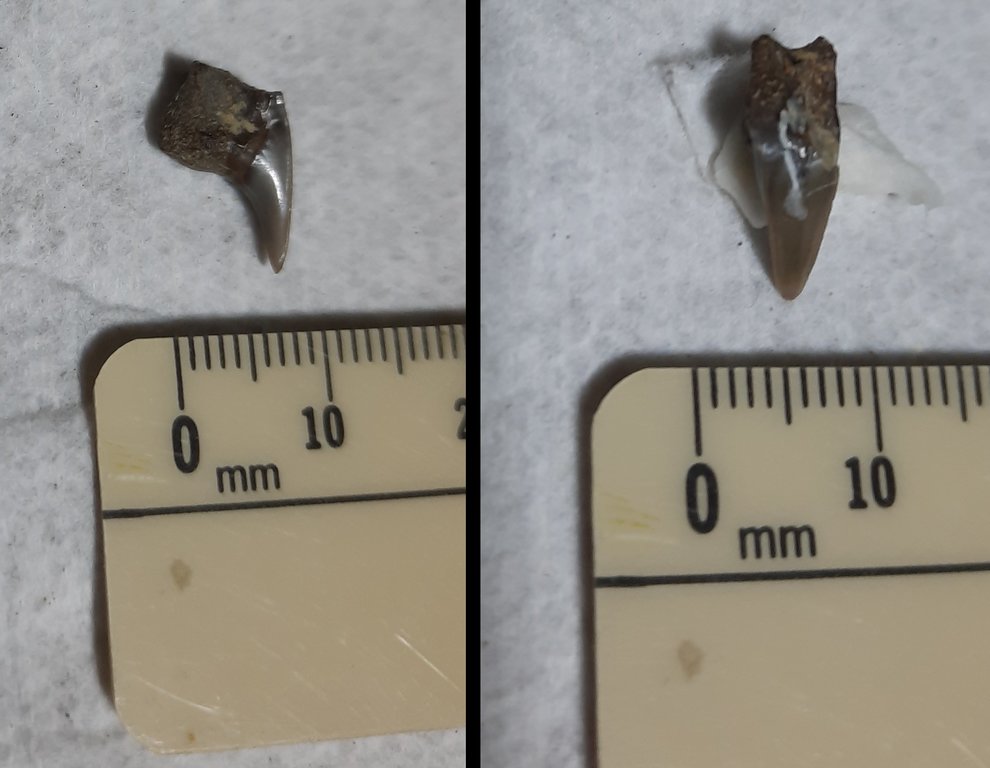My fossil hunting came to a screeching halt in mid October when I got COVID. My lung damage didn’t do me any favors apparently, and it really hit me hard. I was in ICU for eight days, and still have disabling shortness of breath a week and a half after getting out of the hospital.
But I’ve been itching to get out, so I decided to make a trip to Lake Benbrook. I figured I wouldn’t have to walk far from where I parked, so could manage some hunting. It was still too much for me, as it turned out. What should have been a five minute hike back up the hill to the van took me twenty minutes, as I had to keep stopping to catch my breath. I’m hoping my pulmonary rehab will improve things, but it’s looking like it may take a while.
Macrostrat showed Fort Worth Limestone and Duck Creek Formation, undivided where I was, but Kiamichi Formation was nearby too. I knew I wasn’t up to any major chiseling, so just took photos of anything big I ran across. Here are some photos I took. I really liked how those oysters and bivalve stood out in that lower left photo. Click the photos to be able to zoom in and get a closer look.
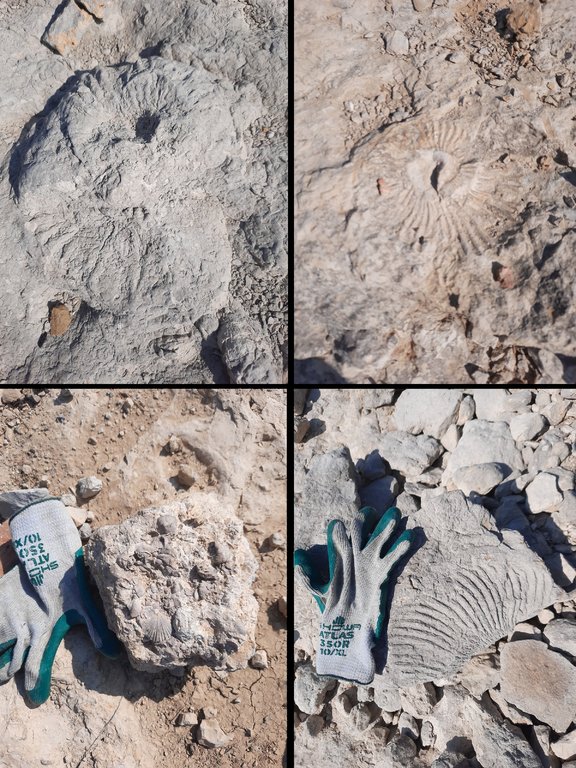
Other than one tooth, I was just finding oysters, bivalves, and an occasional piece of an ammonite, but I thought these looked a lot like fish fins. After investigating, they appear to be pinna bivalves. I left them in place.
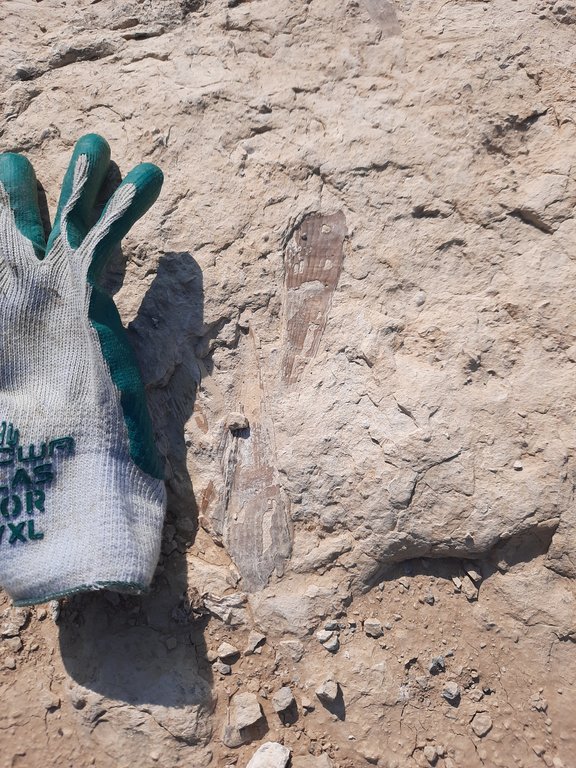
Here is what I brought home. That tooth is very different from any I’ve found before, and I had no idea what it was, but from all the online searching I did, I believe it’s a Paraisurus tooth. Always fun finding something new and different.
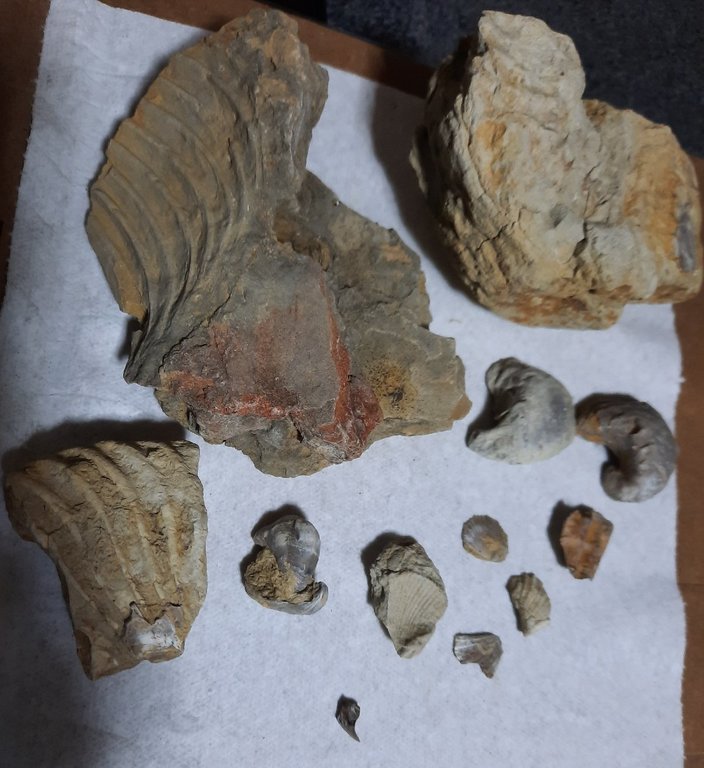
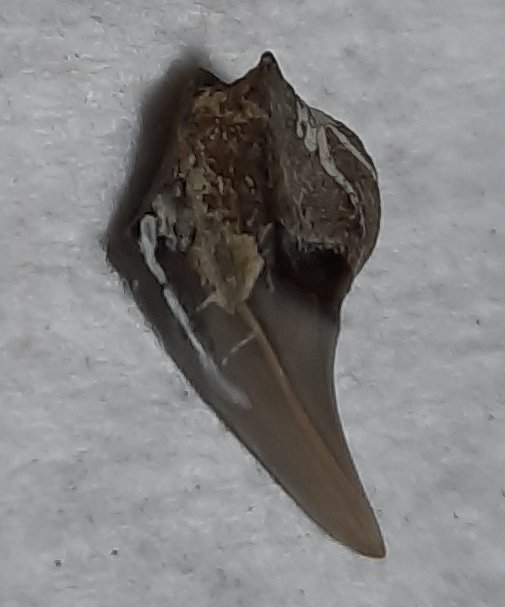
I’m getting forgetful in my old age. I forgot to include a scale to show the size of the tooth. What is so unusual about it is that the flat side is oriented perpendicular to the root, rather than parallel with it, like all the other shark teeth I’ve found. And there is no second flat side. The rest of the tooth is all a curve. The only way I could think of to show the flat side in a photo was to use a small piece of paper towel to prop it up, like I’ve done in the photo on the right.
This tooth only has half the root. From what I’ve read, the root of these teeth preserves very poorly, and they are most often found with no root at all. That makes me want to look through all the teeth I have. It’s possible that I’ve found one or two of these before, but did not recognize it because of the missing root. It’s the orientation of that root that makes them recognizable. That, plus only having one flat side.
Edit: Looking through my teeth, I was reminded that there are quite a few with one flat side, and rounded the rest of the way around. But I have nothing else with the root oriented like this one.
